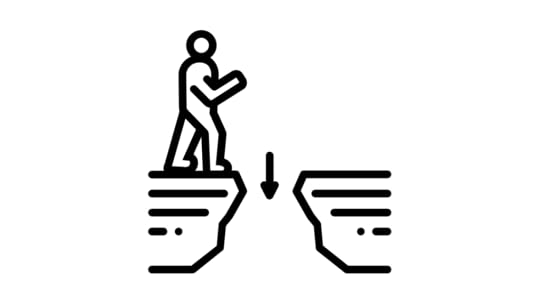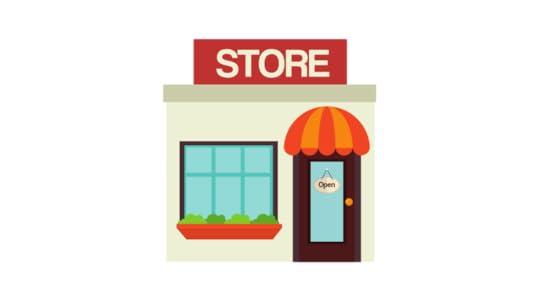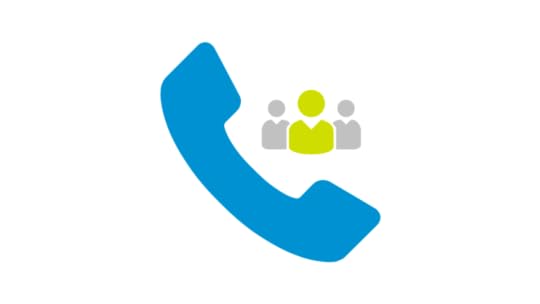Andy Paul's Blog, page 6
April 2, 2020
755: Selling Is Human, with Mary Grothe
Mary Grothe, Founder & CEO of Sales BQ®, joins me in this episode of #Accelerate!
KEY TAKEAWAYS
Mary Grothe relates her employment, starting at Paychex before she graduated from college. In 2008 and 2009, Mary was the number one sales rep and was asked to help rewrite their processes and methodologies.Mary founded Sales BQ® in 2017. Sales BQ® helps build and execute revenue strategies, for B2B companies coast to coast, of up to $20 million in revenue. They build the revenue funnel through the whole customer journey.Mary briefly describes the process and how they work with companies to make sure their clients are making “a lot of money.” It starts with IQ — understanding how the product works in the market to solve buyer problems.You must be able to express passion, conviction, and enthusiasm and “know your stuff.” As you provide expert the client will be comfortable with you. Next, show EQ — be a great human being; share an emotional connection.Work consistently with BQ — the behavioral quotient. Be reliable, work harder than ever, avoid procrastination, be organized, block out your time, focus on following a good, pristine process for a high closing rate.BQ was what set Mary apart from her colleagues at Paychex. She was never satisfied to get by. She always wanted to do her best.Mary talks about the pristine process to close. Each person on the buying team has unique buying criteria, based on their role and need. People bought from Mary because she stood apart from other products or services.People connect with other people. Drop the formality and fear. Connect with the prospect as they want to be reached. Different people have different emotional needs. Mary describes how her personality style works.Mary tells how she teaches BDR teams to have genuine conversations with their contacts. Being natural is better than being restricted by a script. She shares an example of a “better question” for our time of sheltering in place.In sales, Mary memorized client questions and what was important to them. Have your sales conversations around the “why” of customer needs. Mary teaches BDRs to have a frame of reference.Andy suggests paying BDRs as you pay AEs. Mary, a hunter, would love to be a BDR. BDRs should be better than “entry-level.” Hire brilliant people and bring them to client meetings. Help your people develop.One-on-ones are not about numbers or close dates that you already have in your reports. They are about mentoring and developing talent and skills. Work on your team’s mental mindsets.
The post 755: Selling Is Human, with Mary Grothe appeared first on Andy Paul.
March 26, 2020
754: Sales Fundamentals w/ Brendan McAdams
Brendan McAdams, Co-Founder at Expertscape, and author of SALES CRAFT: Proven Tips, Practices and Ideas to Advance Your Sales Success, joins me in this episode of #Accelerate!
KEY TAKEAWAYS
Expertscape is a website that ranks medical experts by 29,000 topics using the NIH PubMed Repository. Expertscape’s algorithm identifies the most knowledgeable people by the quality of their publications.
Brendan explains the business model of Expertscape. Advertisers and large academic and medical centers support it. People use the site for specific reasons and advertisers advertise on the pertinent pages.
Andy enjoyed reading SALES CRAFT. Brendan and Andy agree that success in sales is based on fundamentals like consistency and followup. Brendan wrote the book after years of making notes from his observations.
The book offers practical tips every salesperson needs to know. It is not a sales methodology; you don’t need to read it front-to-back. It teaches decent human practices to help you engage as a good human being.
Brendan talks about interviewing for sales positions, compared to selling. The job you are hired for is often not the job you are going to do. Brendan suggests you find out what would kill the deal and confront that.
A sale is never over, especially in enterprise-level selling. The contract is just one stage. Andy talks about the stages of a relationship: fledgling, steady-state, and transition. Decisions are made early in the relationship.
Be on time. That means being a few minutes early. Initial impressions matter. Be reliable; it will make your customers look good internally. If you’re going to be late, show consideration by texting before the time.
If your customer is late, ask if you can reschedule, offering two times you can meet. If the customer is inconsiderate of your time, that’s an indication of what kind of customer they will be. It’s OK to walk away.
Andy talks about maximizers and satisficers, using Herbert Simon’s terminology. Maximizers don’t make the easiest customers and they experience more buyer’s remorse. Brendan talks about selecting your customers.
Be honest and direct. Customers want sellers to lead and inspire. Brendan explains limitations and where you wouldn’t use his product. That defuses a series of objections in the buyer’s mind.
Brendan describes meaningful touches. Move the buyer closer to a decision with each touch. Attention spans are short; people want to understand quickly. Summarize, use humor, and be humble. Andy recommends the book.
Brendan’s book is for new salespeople who want to learn the craft and for seasoned salespeople to add new ideas to their self-improvement program. He may write a version targeted for introverted startup founders.
The post 754: Sales Fundamentals w/ Brendan McAdams appeared first on Andy Paul.
March 19, 2020
753: Proposals that Convert w/ Adam Hempenstall
Joining me this week is Adam Hempenstall, the CEO of BetterProposals.io, UK-based, digital proposal platform.
We discuss how to build a proposal that converts and Adam shares data-driven insights gleaned from the experiences of their customers. Learn why a proposal is not meant to educate your prospect, what you should absolutely NOT include in your proposal and so much more!
Sales Madness Bracket Challenge
Vote for the greatest sales book of all time, win prizes: https://knowledge.ringdna.com/sales-madness
The post 753: Proposals that Convert w/ Adam Hempenstall appeared first on Andy Paul.
March 12, 2020
752: Winning the 5X Deals w/ Lisa Magnuson
Lisa Magnuson, author of The TOP Sales Leader Playbook: How to Win 5X Deals Repeatedly, joins me in this episode of #Accelerate!
KEY TAKEAWAYS
Lisa focuses on big sales deals; she wrote a book on big deals by interviewing 41 Sales VPs about what they need in a sales playbook to repeatedly win 5X deals.You do things differently when you’re targeting a 5X sales deal. Your old sales playbook is inadequate; you must do more. Big deals are messy. The first step is to identify the opportunity. The imperative is to identify big deals.Lisa shares a case story from a consulting client. Lisa was called in to evaluate an opportunity and stayed with the client for 18 months working on a deal that earned them $20 million to begin with and a growing relationship.Lisa’s book includes 16 plays; each play has a sideline coach, such as Brian Burns. Brian says your company has to change to land and support these big customers. When you get it right, you open the door for more big deals.Big deals become steps for growth. Andy shares experiences from his years of selling big deals. As they executed their processes more effectively and productively, all their business opportunities grew.Lisa explains the risk analysis you do when you evaluate a big opportunity. Look for red flags and yellow flags and see how to handle them and be flexible, even if it means partnering with a larger firm to deliver.Consider compensation when you bring together a team. All the dollars shouldn’t go to the salesperson. Level out the rewards, based on contribution. Let your customers see the depth of expertise on your account team.Andy recalls a sale where the customer placed one of their staff in-house at Andy’s company to oversee product development. That deal reduced risk and closed the sale! Lisa tells how a client answered an RFP with ‘win themes.’If you plan to pursue 5X deals, first nurture a culture of accountability in your organization. Andy recommends the process Lisa lays out in her book. It’s not about finding superstar salespeople; it’s about the structure.The account team gets it done by systematically planning for success. This includes relationship-mapping, strategy, and planning. Lisa helped a client get a $40 million deal last year by showing them the path to success.Andy stresses that the CEO needs to be involved. He shares a story about a sales environment where the CEO ran every weekly sales meeting and all the executives participated. The CEO corrected all problems on the spot!Lisa explains the executive communication brief in one of the culture plays in the book. Connect your company’s executives with your prospect’s executives. Capitalize on those executive interactions in the communication brief.
RESOURCES
Accelerate! on iTunes Please subscribe and leave a review!
TopLineSales.com
The TOP Sales Leader Playbook: How to Win 5X Deals Repeatedly, by Lisa Magnuson
CONTACT LISA MAGNUSON
Website: TopLineSales.com
Buy the book, save the Amazon receipt and get an exclusive bonus organizational assessment!
BrightTALK Sales Channel: Lisa Magnuson on BrightTALK
Free Pre-call Planning Guide: TopLineSales.com/resources
The post 752: Winning the 5X Deals w/ Lisa Magnuson appeared first on Andy Paul.
March 5, 2020
751: The Sale Happens in the Mind of the Buyer w/ Lance Tyson
Lance Tyson, sales coach and author of Selling Is An Away Game: Close Business And Compete In A Complex World, joins me in this episode of #Accelerate!
KEY TAKEAWAYS
Selling is an ‘away game’; it happens in the mind of the buyer. Away games are harder because you don’t know the obstacles on the field. Skilled players win more.Lance shares a recent coaching story. He told them your goal for an interaction will determine the approach you will use. Asking for their time is a big commitment.It’s important to be extemporaneous in selling interactions. There’s no perfect script for every situation. Selling is 50% process and 50% art. Be likable. Don’t be the person that lights up the room by leaving it!Actively establish credibility and build trust. Display understanding. Andy comments that a friendship of utility, as Aristotle described it, is what you need in sales.Andy discusses trustworthiness and what it means to ‘know, like, and trust.’ Lance talks about how humans judge one another, starting with appearances. Sam I Am had to build rapport before he ‘sold’ green eggs and ham!People see quickly if you lack integrity. Talk about values and character in sales. Lance talks about having the strength and honor to act and behave the right way, which is important both in his company and his family.“What you do speaks so loudly, I cannot hear what you say.” — Ralph Waldo Emerson, as quoted by Andy. Lance coaches sales leaders around their values.Lance claims empathy is misused. Be sympathetic to other people’s ideas and desires, as Dale Carnegie taught. Gather your customer’s ideas and understand them. Andy lists types of empathy and which one works in sales.What is the value you are going to deliver in your next interaction that brings the customer closer to deciding than before the interaction? If you can’t answer that, you’re not thinking. Focus on the value.Ask the buyer, “What got you to take this meeting with me today?” Be in the moment and make sure they are satisfied with the value of the meeting. Ask what’s on their mind. Give them an authentic response.Sales is a series of guesses; you’ll get a no or a yes. You have to get several yesses before you get an order. The sales process is a straight line; the buying process is a handful of spaghetti thrown on a wall.Andy compares rapport to dating app etiquette. Lance concludes you have to be comfortable enough to ask someone what their thoughts are, going forward. If they ‘have to think about it,’ ask what they like and don’t like.
RESOURCES
Accelerate! on iTunes Please subscribe and leave a review!
Selling Is An Away Game: Close Business And Compete In A Complex World, by Lance Tyson
How to Win Friends & Influence People, by Dale Carnegie
Green Eggs and Ham, by Dr. Suess
Good People: The Only Leadership Decision That Really Matters, by Anthony Tjan
Against Empathy: The Case for Rational Compassion,
by Paul Bloom
The Challenger Sale: Taking Control of the Customer Conversation, by Matthew Dixon and Brent Adamson
CONTACT LANCE TYSON
Website: TysonGroup.com
LinkedIn: Lance Tyson
Twitter: @LanceTyson
Instagram: @lance_tyson_1
The post 751: The Sale Happens in the Mind of the Buyer w/ Lance Tyson appeared first on Andy Paul.
February 27, 2020
750: Selling with Stories w/ John Livesay
John Livesay, “The Pitch Whisperer,” speaker, podcast host, and author of Better Selling Through Storytelling, joins me again in this episode of #Accelerate!
KEY TAKEAWAYS
Storytelling makes you magnetic and memorable! People remember stories, not information. Why aren’t salespeople telling case stories, instead of case studies?John teaches the four elements of a good story. (Hint, the story is about your client or someone like them, not you.)In your story of origin, sell yourself, your company, and your product or service. How can people know, like, and trust you without your story? John explains how to tell it.Build trust first, give your prospect a reason to like you, and then give them something that helps them know you. Trust comes from trustworthiness. Make the prospect feel safe. Use video calls more than just audio calls.You don’t have to look perfect; you have to be authentic so people will relate to you.The steps in the buyer’s journey provide a better progress measurement than a sales funnel. Look at how your prospects see you. In his book, John teaches how to go from invisible to irresistible.What’s the old way of selling? John explains what he understands by the “old way.” Storytelling is part of John’s new way. Also, speak informally and conversationally.Where does Powerpoint fit in the final meeting? Never read from slides. People remember visuals, not what you read to them. John explains how to reverse-engineer your talk with a strong opening and a strong closing.To build your closing, first, consider what you want the prospect to think, feel, and do; then provide material to guide them. The best story will be the most memorable.The meeting needs a good opening. John explains a good opening. It’s never about how excited you are to be there! It’s about what the prospect needs and how you have met similar needs for others.Your company story needs to be relatable to your prospect. How do you differentiate yourself? Forget the “two guys in a garage” history.In the “beauty contest” or “bakeoff” — the prospect doesn’t care what’s in the specs or on paper. They will choose the salesperson they like the best because choosing will lead to a long relationship.
RESOURCES
Accelerate! on iTunes Please subscribe and leave a review!
CONTACT JOHN LIVESAY
For a free sneak peek of Better Selling Through Storytelling,
text “pitch” to 66866
Website: JohnLivesay.com
Google: “The Pitch Whisperer”
The post 750: Selling with Stories w/ John Livesay appeared first on Andy Paul.
December 28, 2019
Before You Can “Fix” Your Sales, Master The Fundamentals
In the hierarchy of things that you can do to improve your sales
performance, there are both simple and complex solutions. Depending on your
company’s particular situation, both the simple and the complex solution could
provide value to your organization. They are not mutually exclusive. The
question is: what should you do first?
The difficulty with sales problems is that they can be hard to
diagnose and solve. There are lots of interlocking pieces to the sales puzzle,
and the temptation is to assume that hard problems require complex and
expensive solutions. Therefore, depending on your company’s size and resources,
this could mean that your most pressing sales problem doesn’t get addressed
because there is no budget or that a large investment is made to implement a
new selling process and train your entire sales force how to sell to that
model.
My experience has shown that a company with ample resources will
typically default to the complex solution because CEOs and sales managers make
the often faulty assumption that the simple solutions are already in place. A
company with more limited resources will also tend to overlook the simple
solutions to their sales problems because they have been conditioned to believe
that the only answer to a hard problem costs money. If they search online they
will find a parade of reputable sales training and consulting firms promoting
selling systems that promise to fix their sales problems. But those approaches
often require a substantial investment of money over a substantial period of
time.
However, irrespective of company size, if management were to
investigate and do a little digging they will usually find that the fundamental
disciplines every company needs to flawlessly execute their sales plan, and
that they believed were in place, have either faded due to management
inattention or never existed to begin with. They assumed that all sales leads
were promptly being followed up. They assumed that all salespeople were being
responsive to their prospects and customers in zero-time with the information
and answers to the questions they need to move forward in the buying process.
They assumed that customers were receiving the level of unconditional support
required to turn them into loyal repeat customers. They assumed that their
frontline salespeople knew their products inside and out, or at least better
than their customers did. Well, we all know what happens when you assume.
As with any investment, the dollars invested in new selling
systems and sales training involve a certain element of risk. You can’t
precisely predict the outcome although the potential payoff of improved sales
productivity, over an extended period of time, can be large as well. So,
imagine a company’s surprise when, after they have invested in an expensive new
selling system. modified their sales model and re-trained their entire sales
team, they determine that they are experiencing the same sales problems as
before.
The fault doesn’t lie with the new selling system. The problem
is that the company is trying to build a new sales house on a shaky foundation.
The biggest return on the dollars you invest in your sales team will come from
ensuring that you are mastering the fundamental sales disciplines ( and
incorporating those into your daily routines. Before you embark on an upgrade
program do the simple things first. Then take the next step to renovate and
upgrade your sales house.
Are you Walking the Dog or is the Dog Walking You?
There exists a touch of schizophrenia in some of the writing and
blogging on sales, sales improvement and sales training today. On one hand,
there is general agreement that the world has changed, that universally easy
access to information has shifted the balance of power in any sales transaction
from the seller to the customer, converting the old familiar sales cycle into
the buying cycle. Selling has become a “customer-oriented.”
And yet, on the other hand, there still remains a major emphasis
in selling today on the notion of controlling the sales process and controlling
your prospect and customers. (If you Google “controlling the sales process”
you’ll get 31,400,000 results.) However, there is perhaps no bigger myth in
sales today than that of a salesperson controlling the sales process or their
prospects.
Many companies and salespeople still nominally employ the
traditional “control-oriented” sales model today. It is easy to understand why
people gravitate towards this approach to selling. Being in “control” is
comforting. It is a hard habit for sales managers and salespeople to break.
Even though it doesn’t work.
I like to believe that I am in control when I’m taking my dogs
for a walk. Unless they decide that a compelling new smell emanating from the
bushes demands to be investigated. Or some yappy purse dogs straining on their
leashes in the opposite direction on the other side of the street need to be
greeted and sniffed from stem to stern. Like prospects, my dogs indulge my need
to appear to be in control.
Paradoxically, the primary tactic a salesperson often employs in
a vain effort to control the sales process centers on controlling and metering
the flow of information to the prospect. Rather than helping the salesperson
with his or her control issues, the prospect experiences this absence of
information as poor responsiveness and poor sales service. Whatever advantage
the salesperson had hoped to gain by “controlling the prospect,” he
or she will have lost.
This approach is the exact opposite of how effective sellers
today are using responsiveness, content and speed as competitive advantages to
help the buyer make an informed purchased decision in the least time possible.
Notice the emphasis on “helping the buyer.” Selling must be a service
in support of the buyer. And service, by definition, is about giving, not
holding back.
Rather than making life harder for salespeople, openly
relinquishing any claim to controlling the sales process and the prospect frees
a salesperson to develop more effective ways to create value for the customer
and differentiate their product and company through how they sell.
Acknowledging that you are not in control of the prospect forces
you to focus on your prospect’s requirements, specifically in terms of the
information they must have to make an informed purchase decision. And, how you
can meet their needs by using the resources that actually are under your
control to sell with the maximum impact in the least time possible to win more
orders in less time.
I read a blog posting recently about what a salesperson could do
to increase sales. The title was something catchy like “A Billion and One Tips to Increase Sales.” It was hard
to argue with the premise of the post. Everyone in sales can use good advice on
increasing sales. It’s the reason I continue to read everything I can about
sales. There is always something new to learn.
In this case, this author’s useful quick tips were all about
creating more sales activity. He was asking the question ‘What should you do if
you have prospects but they aren’t moving forward fast enough?’ and providing
answers that were designed to create a flurry of sales activity around
prospects to stimulate them to engage and move forward with the seller.
But is selling the same as sales activity? And, if a prospect is
not yet fully committed to the buying process, is random sales activity the way
to get them engaged?
Nothing is sometimes better than something
I had a salesperson, named Arte, working for me once who had
confused activity with selling. He came into my office one day and told me that
he had invented his own method of selling that he called SWARM. The acronym
stood for Surround With Activity to Regain Momentum. His thought was to envelop
his prospects in a constant swarm of sales activities such as of phone calls,
visits, emails, voice messages, invitations to webinars and seminars, product
demonstrations in the hope that eventually something would stick and the
prospect would relent and engage.
How’d that work for Arte? Not so well. But he got high marks for
creativity.
Unfortunately, similar to Arte, many salespeople fall into the
trap of believing that doing something, anything, with a prospect is better
than doing nothing. This happens all the time when the prospect has gone radio
silent. There are lots of reasons why this occurs and it is the job of the
salesperson to determine the answer and respond appropriately and with content
that has value for the prospect. But rarely is the correct response to bombard
the prospect with trivial, time-wasting requests and interactions.
Keep in mind the customer’s objective
In a sales situation, or buying situation, it is important to
keep in mind that the goal of the customer is to gather the information or data
they need to make an informed purchase decision with the least investment of
their time possible. This is not to say that customers won’t spend the
appropriate time to purchase a product or service. This just means that they
won’t spend a minute more than they have to.
Create and deliver value each time you talk to your prospects and customers
If you are selling you should only be taking actions with a
customer that have a defined purpose, deliver clear value and support the
customer’s goal. To that end, instead of unthinkingly reaching out to the
customer and demanding some of his or her time with a trivial request, consider
the opposite approach: make sure that every interaction you have with a
prospect or customer achieves Maximum Impact in the Least Time (MILT) possible.
It requires planning and thought to make certain that each time you interact
with the prospect or customer you are providing information that will bring
them closer to their goal of making an informed decision. But the result is
that you will bring value to the customer through your selling. If you want a
customer to engage, create value for them by your actions. Wasting their
limited time with “sales activities” does the opposite.
Selling has a purpose. It is not the goal of your prospects or
customers to spend time with you. In fact, the opposite is true. They want to
accomplish their job, which is to buy a product or service, while spending as
little time with the salesperson as possible. The winning salesperson will
usually be the one who knows how to make that happen.
Which is more important in selling: Process or selling skills?
This is one of the classic debates about sales and selling. It
is very similar to the ‘nature vs. nurture’ debates that young adults
without kids and too much time on their hands indulge in. (Anyone with kids
quickly learns the answer to this…)
The answer is that both process and skill are required to succeed in
sales. However, process provides the platform for skills to flourish.
What Would Michael Do?
Take the case of an elite athlete like Michael Phelps, the world
champion swimmer. Michael Phelps trains like a demon, spending hours face down
in a pool every day, to showcase his skills on the world’s biggest stage, the
Olympics. He won an unprecedented 8 gold medals in swimming at the Beijing
Games in 2008. There is no doubting his obvious skills. Having conquered the
world once, the question was would he return to the London games in 2012 and
try again?
In preparation for the Beijing Olympics, Michael followed the
training regimen put together by his coach, Bob Bowman. It was a process that
focused on the quality of the daily work Michael did in preparation for
competition. Every workout he swam and the details of how he performed in that
workout, every weightlifting session, every cross-training session were
meticulously recorded, tracked and analyzed. Bowman and Phelps knew that the
most accurate predictor of how Michael would perform in the big competitions
was the data collected about his daily training process over the previous
months and years.
The Day-to-Day Process
This is similar to selling. How you execute your sales process
on a day-to-day basis will be the most accurate predictor of whether you will
win orders and meet your objectives. An effective and disciplined sales process
can do for you what it does for Michael Phelps. If you work hard, it will put
you in a position to compete for and win orders. It is how well you execute the
basic sales activities that comprise the steps of your process, and how often,
that will ultimately lead to the order.
As he began his preparations for the London Olympics
Phelps strayed from the process that had led him to the podium eight times in
Beijing. And, with all the skills in the world, his results in competition
suffered. He was losing to swimmers that previously couldn’t compare to him.
What did he do? He redoubled his commitment to the process laid out by his
coach. He might have rebelled against the process but he returned to it because
he knew that if he invested his hard work into it results would follow.
Listen to Michael Phelps being interviewed after a competition
today and he defaults to talking about his process. The race result might now
have been a first place finish but he will talk about how well his training is
going instead. His focus is on how is he performing each day in each step of
his training process. He knows that if he executes his process he’ll put
himself in the position to achieve the results he expects.
In the same way sales process can provide a much clearer
snapshot of potential sales than simply looking at your pipeline of prospects.
Well-defined sales processes provide a method to continually assess and measure
the underlying sales activities that will lead to orders. Using metrics to
continually measure and fine-tune sales processes, just as Bob Bowman did with
Phelps’ training regimen, leads to improved outcomes for salespeople of all
skill levels.
Your Process Enhances Your Skills
I had a client where one of the more senior salespeople, a
grizzled sales professional, Ollie, was determined to resist management’s
efforts to implement some fundamental and essential sales processes to respond
to a changing sales environment. Ollie had always managed his sales territory
his own way and while he possessed great sales skills and experience he was
floundering. He found himself at odds with evolving prospect and customer
expectations for salespeople in terms of responsiveness, follow-up, content
delivery and service.
The processes that Ollie’s management implemented saved his
sales career by requiring Ollie to become more responsive, more proactive and
timely in follow-up, more knowledgeable of the products he sold, more conscious
of eliminating time-wasting sales calls and making every customer interaction
achieve the maximum impact in the least time possible in order to compress
buying cycles.
This does not mean that a salesperson should ignore the skill
components of selling. We should always be working to improve our sales skills
no matter how much experience we have. But sales skills need to be utilized in
support of defined sales process to create the most value for the customer. And
the salesperson.
Why are your sales so slow? I’m not referring to your order
rate. I am talking about the activities and processes that have to be happening
in Zero-Time in order for you to achieve your sales goals. One thing leads to
another and if you are running in place in February, you’ll be running to catch
up by March and hopelessly behind by June.
Here we are, still near the beginning of a new year, when hopes
for the next twelve months should be running high. And your selling efforts
feel like they are stuck in the thick mud. Just like they were last year. This
is not the way to kick off what should be your most successful sales year ever.
Everyone has a reason or an excuse for slow selling. Believe me,
we have all been in a situation where you question your sales manager about why
it is taking so long to move a customer along in their buying cycle, and they
don’t have an answer that makes sense. Or any answer at all.
I ask all my new clients to identify the reason, or reasons, why
they are not growing, why their sales efforts are stuck in neutral. The
responses I receive are typically all of a piece. As CEOs they can identify the
symptoms but not the causes of the problem. But as CEOs and sales managers of
SMBs you can’t be a doctor who can only diagnose the symptoms of the illness
without prescribing a cure.
I group the symptoms of sales lethargy into the S-L-O-W acronym.
S is for Status Quo.
Too many companies are just coasting along. The CEOs are not
really satisfied with their results but they are too worried about making any
changes that could rock the boat and potentially jeopardize the sales they do
manage to capture. Maintaining the status quo is not a way to thrive.
“Status Quo is ancient
Greek for ‘slow death.'”
Folks, say hi to Milt again. (To learn more about Milt, check
out my book, Zero-Time Selling, or this previous blog post. )
“Hey.”
Actually, Milt, Status Quo is not Greek. It is Latin for
“the current state of affairs.” But when an SMB’s sales are stuck,
maintaining the status quo is the same as slowly dying.
“As I said.”
L is for Lack of Urgency.
In today’s economy you can’t expect the customer to operate on
your schedule. The timeframe for every sales action has to be immediate.
Customers do a lot of online research on your product before they ever call you
and when they do they are single-mindedly looking for answers to their
questions. The first seller with the complete answers wins.
O is for Outdated sales practices.
Unfortunately many SMBs still operate their sales teams like it
is 1912 not 2012. Their only concessions to the 21st century are a website and
email.
“What would you call
my pager?”
Google d-i-n-o-s-a-u-r.
Your customer and their buying behavior have been irrevocably
altered by technology over the past 15-20 years. And if your sales practices
and sales methods haven’t changed in concert with your customer then you can’t
expect to effectively compete for their business against competitors who have
evolved.
“Google
N-E-A-N-D-E-R-T-H-A-L?”
W is for Weak sales management.
I don’t like to point fingers.
“But you will.”
SLOW starts at the top.
Even a highly self-motivated sales person will find it hard to
succeed in company where the status quo rules, where everyone’s motor revs at a
slower idle and where the sales systems and processes were obsolete before the
turn of the century. A successful sales culture begins and ends with
management. The CEO and sales management have to commit to change and urgency.
Make a change today to get your sales going!
Now, as you move further from the old sales year and deeper into
the new sales year, now is the time to evaluate what you can do to shake things
up, to change the routines your sales team have followed year after year. Break
some of your bad old habits and reach a level of sales success that you haven’t
achieved before.
Here are THREE tips you can put to use today. These are not
permanent fixes. Or suggestions for how to comprehensively revamp your sales
efforts. There are just small ideas you can put to use TODAY that can begin to
make a difference and break you out of the SLOW mold. It doesn’t matter which
one you choose. Just choose one of the following steps and put it into play.
Make One Change Today.
Take a close look at your sales routines; your sales processes.
Tell each of your salespeople to choose just one customer facing activity and change
it. Now. Don’t just pay lip service to change. Do something about it. This is
not a change that requires a committee to plan and implement. I’m advocating
something much more simple than that. Just choose one aspect of your day-to-day
sales activity and change it. Simple.
Create a Metric.
Every aspect of your sales process is measurable. Do you have
metrics for each step of your selling process? Are you measuring how long it
takes to respond to your sales leads? Or how long it takes you to write a quote
and deliver it to a prospect or customer? Choose a single aspect of one sales
process and assign a metric to it. Then measure it today and again tomorrow.
Be Accountable.
Tell someone about the change you made or the metric you’re tracking. Tell a colleague that you have undertaken to make a change in your sales routine. Tell your boss which part of your sales process you have begun to measure and what the goal is. When you tell someone else that you are making a change they will be interested to learn if it is helping you. As a result they will ask you how it is going. And you will need to have an answer for them. Being accountable for change is a big motivator.
The post Before You Can “Fix” Your Sales, Master The Fundamentals appeared first on Andy Paul.
December 27, 2019
Sell Low

Sell Low: Actual Decision-Makers and When NOT to Sell to the C-Suite
The
drumbeat from the sales experts has always been the same: Sell High.
Always
sell to the decision-maker. Don’t waste your time with anyone else. Talk to the
CEO and tell her that you want to create a “partnership” between your two
companies. Make her understand how strategically important your products are to
her company.
However,
most of what you’ve read on this topic is just wrong. In order to maximize your
sales productivity you need to do the opposite and focus your sales efforts on
the lowest responsible level within your customer’s organization.
The
universe of writing about sales extols the requirement to penetrate the C-suite
to successfully sell a product or service.
Definition: The C-suite is the
inclusive label for the CEO and everyone else at the vice-president level.
However–and
this is very important–for the vast majority of products and services being
sold, this assumption will just waste your valuable selling time. And, possibly
annoy the customer.
Here’s
why in most cases your product is not strategic enough to the customer to
warrant the type of partner relationship so often touted in sales training
venues.
What
a customer wants is not a partner, but a great vendor: one who will be
absolutely responsive to their questions and requests, and who will provide
unconditional support at every given opportunity. So in selling your product,
you need to target the person most qualified to ask those questions. Rather
than selling high, you need to sell low.
Selling
low means selling your product to the lowest-level responsible person(s) within
your customer’s organization: the person who will actually make the decision of
which specific product or service to purchase. Selling low is a technical step
that requires some careful, brutally honest self-assessment to implement
successfully.
The cold hard truth is that well over
90% of all products and services sold in a B2B environment do not require
C-level approval for purchase.
Let’s
take a small manufacturing company that produces $50 million a year in revenue.
How many purchases does this company make every year? It will easily number in
the thousands of transactions. Consider everything they need to keep their
business running, from paper clips to janitorial service to phones to software
to raw materials, and much more. What percentage of those purchase decisions
will be made by the CEO? Or by one of the executives? Very few will be worth
spending their valuable time on.

The Actual Decision-Makers
In
most companies, the people who typically decide whether to buy your product or
service are the functional employees who will use it on a regular basis. They
are the individuals or team who create the specifications or requirements for
the products they use. They often are the people who take your product out of
its box, plug it in, power it up, and call you if it doesn’t work. These are
the people whom the higher-ups depend on to do product research, evaluate the
alternatives, and make the decision to buy either your product or your
competitor’s. These are your Actual Decision-Makers. (Let’s call them the
ADMs). They are the people you want to sell to.
Internal Advocate
Why
focus on the ADMs?
First,
it is much easier and quicker to get to this person.
Second,
the ADM will respond to being poked by the sharp end of the stick. They don’t
want to waste time with someone who can’t answer questions and provide
information in Zero Time. The customer will want to accomplish the task of purchasing
your product or service as urgently as you want to get the order. Third, the
relationship with the ADM will be built on performance and support. If they
don’t like your product, your company, or you, then you won’t get the order.
There
are two places to start looking for the ADM. First, who contacted your company
about your product and service? Who in their organization made the phone call
or sent the first email? If the sales opportunity came about through an
in-bound lead, then the chances are reasonably good that the person who
contacted you is the ADM.
Second,
who is the actual user or consumer of your products and services within the
purchasing organization? The person who will be using your product day in and
day out will carry the most raw weight when decisions are made. Is that person
also the Actual Decision-Maker? This will require a little investigation by
your salesperson.

The Boss
The
Boss is the lowest-level person in your prospect’s organization who can
authorize the purchase of your product or service. This could be the ADM, or a
functional manager in your ADM’s department, or it could be someone in
purchasing with the authority to bind the company. Or it could be the CEO of an
SMB.
The
Boss is the highest level that your team should sell to within the customer
organization. After all, why go any higher? Why should your sales team spend
their limited time chasing after the boss of the boss of the guy who is signing
the PO? In most organizations the Boss will defer to the judgment of those who
work for him or her.
Of
course, they care that the company is buying the right product at a good price.
But at the end of the day, they usually don’t care whether the ADM chose
Company A or Company B, as long as the customer company has an approved vendor
list and both Company A and Company B are on it. If the customer doesn’t have
such procedures in place, then the Boss may need some attention and assurance
from you that your local firm, Widgets & Things, sells a good product.
Otherwise, don’t worry about the Boss. Just focus on the ADM.

Avoid The Gap
If
a seller attempts to oversell a product, going to a C-suite executive, they
will fall into the gap: a time-wasting disconnect between the executive and the
ADM. When you do this, you add unnecessary risk to your sales efforts.
First,
you get the executive involved with a decision he doesn’t have to make. While
you’re trying to get his attention, your competitor is selling straight to the
ADM and locking down a deal. Second, if you succeed in getting the executive’s
attention, then instead of putting the decision in the hands of the ADM, you’ve
pushed it up the ladder to an executive who may not view your product as
favorably as the ADM.
If
you’ve been working with the ADM and have secured his commitment to make the
purchase from you, then you need to take a deep breath and do nothing. It is
always a stressful time for the seller, when the ADM says that he has submitted
the purchase requisition to the Boss for approval. You need to resist the
temptation, or the urging of your management, to jump in and check with the
Boss on the status of your PO. If you do this, you risk falling into the gap.
There
is a time gap between levels of management, just as there is between the ADM
and the Boss. If the ADM says the PO will issue in five days, schedule a
follow-up in your CRM system to call him in three days. Keep in mind that the
ADM, having made a decision and passed it up the chain for sign-off, is at
least as eager as you are to be done with the whole sell/buy process and get
back to important work.
The
time gap between each level of management should be presumed to be at least a
week. It could be longer. If there are two levels of management between the ADM
and the Boss, then you risk injecting another two weeks into the buying cycle
if you attempt to involve the Boss in a decision that she was content to leave
to her staff. This creates time for your competition to get back into the deal.
Falling into the gap puts the brakes on Zero-Time Selling and injects an
element of risk into the sales situation that didn’t exist before.
The
gap swallows up too many sellers. They try to jump over it, in order to
influence the actions of the Boss. What they fail to keep in mind is that the
Boss is usually just being asked to sign a piece of paper that authorizes a
decision, not to make the decision herself. If you try to deal with the Boss as
a decision-maker, you’ll only open the door to questions you’ve already
answered, or that didn’t need to be asked. This will defeat the momentum of
Zero Time and risk opening up the buying process again.
Effective Zero-Time Selling requires you to be
realistic about the perceived value of the product you are selling to your
customer. Not every product a company buys merits a partnership with the
seller. Sometimes a vendor is just that. This doesn’t mean the customer doesn’t
value his relationship with your company or that he doesn’t appreciate the
great customer service you provide without asking. Sell a great product with
great support, and you will be rewarded with orders. Just don’t waste time
selling to people who don’t have the time to care.
December 26, 2019
Selling More: 4 Steps to Break out of the Sales Doldrums
Key
Points
The key to winning more orders is to “sell more” which means to consistently take actions that will lead to orders.Doing “enough” is never “enough.” More leads to more.Even with an influx of customer initiated leads, it may not be enough to make quota. A salesperson has to do what they need to do to make their number. (Tied to doing More vs enough)Not enough to just do more. Have to create value for the customer.Random sales activity ais not the same as doing “more.” Have to ensure that the steps you take create value for the customer.Sales activity always has to be tied to creating value for customer. Otherwise you are wasting your time and the customers.

Selling More: 4 Steps to Break out of the Sales Doldrums
As a speaker, consultant and author, I am
often asked by sales managers and sales professionals: “If you had to
choose one piece of advice to give me about how to grow sales, what would it
be?” My standard answer is “Sell more.”
You
can see why I am considered such a sales genius and sales guru.
Of
course, persistent questioners, beguiled by the zen-like simplicity of my
advice, demand to know more. Surely there must be some inscrutable truth hidden
behind the words and I shake my head and whisper softly, so softly that they
must lean their heads in to hear my words, “Not really.” I motion for
them to sit at my feet and I reveal this mystery of sales.
I
illustrate the meaning of “Sell More” with a parable about a
salesperson for a typical medium-sized business. His name was Carlos. Carlos,
who went by the nickname Eckstein, always had a reason for everything. These
included why he would almost always make his numbers but never quite get there.
His boss was at a loss. He thought the problem might be spiritual so he
summoned me, the sales guru, to analyze the problem.
Observing
Eckstein in action was to see a fairly typical salesperson at work. On the
surface it looked like he was taking the right steps to succeed and he seemed
happy in his work. Unfortunately, his desire, his intensity and his sales
thought process matched his performance. It was mostly right. But something was
holding him back from taking his productivity to the next level besides the
mismatched socks he wore each day to work.
Eckstein’s
problem was one of distinguishing between “enough” and
“more.” He was like most salespeople in that regard. He always
thought he was doing “enough” to make his numbers and that if
everyone else just did their jobs then he would be able to make his quota. It
never occurred to him that the key to unlocking his success was doing
“more.”
If
you don’t have enough prospects, then sell…more. Prospect with existing
customers to assess if they have new requirements for your products and
services. Call existing customers for referrals and make those connections now.
Go to a networking event and meet 6 new contacts. Ask your connections on LinkedIn
for two introductions to potential new prospects. And, if you are lacking all
imagination, then heaven forbid, go make some cold calls. Fill every hour with
selling. Just sell. More often. More persistently. More creatively. More
aggressively. Sell. More.
If
you have enough prospects, but aren’t hitting your numbers, then you also need
to sell more. Be responsive in Zero-Time to customer requirements for
information, instantly follow up every lead with the answers the customer
needs, turn around all requests for quotes and proposals and information
immediately. and then fill every spare minute with productive sales activity to
sell with maximum impact in the least time possible. Just sell…more. More
responsively, more quickly, more forcefully, more actively, more
enthusiastically. Sell More.
Sell
More does not mean to engage in random sales activity. That is what gets sales
people like Eckstein into the hole they are in now. To ‘Sell More’ means to
fill your sales time with intelligent, productive, creative, responsive sales
actions that create value for your prospect, customer and company.
Sell
More. Win More Orders. Simple.
Doing
What You Need to DO
There
is a lot of talking and blogging going on about cold calling and whether it is
a necessary or even desired part of the sales mix. I can’t resist putting in my
two cents on this discussion.

I
have recently seen a couple of studies and listened to some presentations about
the changes taking place in how sellers and buyers are interacting that are
worth considering as we leap into the fray. In general, the trends discussed
are reflected in the 2010 DemandGen and Genius.com study titled “Inside
the Mind of the B2B Buyer.” One of their key findings was that more than
90% of B2B customers/buyers said that on their transactions that they had
initiated contact with the seller. Only 10% said that they were contacted cold
by the seller.
Personally
I’m not convinced that the 90%, is an accurate reflection of the sales
situation today. But that is really beside the point. The key takeaway is that
it is an indicator of how your customer’s perception of the role of sellers has
changed and how the actual role of sales is continuing to evolve at a rapid
pace. The Internet and social media have irrevocably transformed how
conversations with some significant fraction of your prospects are initiated.
And, even if you, as a seller, initiate contact with a prospect, chances are
high they are going to possess some level of pre-education and
pre-qualification on your product and service on that first call (or they are
going to acquire it by browsing your website while on the phone with you.)
What
does this mean for cold calling? In an ideal world, cold calling wouldn’t be
necessary. In our fantasy, marketing departments would prove capable of
generating well-targeted (or “sales worthy” to borrow a term from my
friend Nancy Nardin) in-bound sales leads in such large quantities, week after
week, month after month, that all available sales time would be consumed with
responsive follow-up. Wouldn’t it be great if the world were handed to you on a
silver platter like that?
Unfortunately,
that dreamy ideal world doesn’t exist for most companies. Using the figure from
above as an example, even if you meet 80% of your sales goal today from
prospects that originated as sales worthy in-bound sales leads, where will you
find the remaining 20%? You will find them from proactive prospecting (i.e.,
cold calling.)
If
you’re in Sales your job boils down to this: doing the hard work required to
meet your goals. Whenever there is a gap between in your pipeline between the
number of qualified prospect your need to meet reliably meet your goal and the
number of qualified prospects in your pipeline generated from in-bound sales
lead conversions, and there will almost always be one, it has to be filled in
by prospect activity generated by you. This means fulfilling your
responsibility as a salesperson to do what you have to do in order to meet and
exceed your assigned goal. If this means spending a portion of every day
following a disciplined prospecting process (i.e., doing some research to pick
targets, making connections online, getting on the phone or going out and
making calls) then that is what has to be done.

In
my first professional sales job out of college, in the pre-Internet dark ages,
I was selling big computers. Everyday involved getting kicked out of the office
at 8am and venturing out to make cold calls out in my territory. I have to
admit it didn’t come naturally to me. So I developed another approach. I hit
upon a system of hosting a seminar in our branch office every Wednesday
afternoon at 4pm during which I would demonstrate our system. I used business
directories to research names of potential prospects in my territory and mailed
out 10 postcards with a hand-written invitation every Thursday. I’d follow up
with everyone on the following Monday morning and again on the morning of the
seminar. Usually I’d end up with one or two attendees each week. Within months
I had a strong, constantly renewing pipeline and was killing my numbers. After
a couple years, I was getting two thirds of my business from existing accounts
and referrals. But every Thursday, I was still sending out 10 postcards and
every Wednesday I was playing host to new prospects.
No
matter how many leads you receive, cold calling, or proactive prospecting,
remains a necessity for most salespeople and most sales teams. Clearly the
amount of time a salesperson has to devote to cold calling could shrink as
increasing numbers of prospects pre-educate themselves online and initiate
connections with potential vendors. But the role sales prospecting plays in
building a strong pipeline of qualified prospects to ensure that you make your
numbers is will never go away completely.
Sometimes
you just gotta do what you gotta do.
Don’t
Confuse Sales Activity with Selling
Create
Value with Each Customer Interaction
I
read a blog posting recently about what a salesperson could do to increase
sales. The title was something catchy like “A Billion and One Tips to
Increase Sales.” It was hard to argue with the premise of the post.
Everyone in sales can use good advice on increasing sales. It’s the reason I
continue to read everything I can about sales. There is always something new to
learn.
In
this case, this author’s useful quick tips were all about creating more sales
activity. He was asking the question ‘What should you do if you have prospects
but they aren’t moving forward fast enough?’ and providing answers that were
designed to create a flurry of sales activity around prospects to stimulate
them to engage and move forward with the seller.
But
is selling the same as sales activity? And, if a prospect is not yet fully
committed to the buying process, is random sales activity the way to get them
engaged?

Nothing
is sometimes better than something
I
had a salesperson, named Arte, working for me once who had confused activity
with selling. He came into my office one day and told me that he had invented
his own method of selling that he called SWARM. The acronym stood for Surround
With Activity to Regain Momentum. His thought was to envelop his prospects in a
constant swarm of sales activities such as of phone calls, visits, emails,
voice messages, invitations to webinars and seminars, product demonstrations in
the hope that eventually something would stick and the prospect would relent
and engage.
How’d
that work for Arte? Not so well. But he got high marks for creativity.
Unfortunately,
similar to Arte, many salespeople fall into the trap of believing that doing
something, anything, with a prospect is better than doing nothing. This happens
all the time when the prospect has gone radio silent. There are lots of reasons
why this occurs and it is the job of the salesperson to determine the answer
and respond appropriately and with content that has value for the prospect. But
rarely is the correct response to bombard the prospect with trivial,
time-wasting requests and interactions.
Keep
in mind the customer’s objective
In a
sales situation, or buying situation, it is important to keep in mind that the
goal of the customer is to gather the information or data they need to make an
informed purchase decision with the least investment of their time possible.
This is not to say that customers won’t spend the appropriate time to purchase
a product or service. This just means that they don’t want to invest a minute
more than they have to.
Create
and deliver value each time you talk to your prospects and customers
If
you are selling you should only be taking actions with a customer that have a
defined purpose, deliver clear value and support the customer’s goal. To that
end, instead of unthinkingly reaching out to the customer and demanding some of
his or her time with a trivial request, consider the opposite approach: make
sure that every interaction you have with a prospect or customer achieves
Maximum Impact in the Least Time (MILT) possible. It requires planning and
thought to make certain that each time you interact with the prospect or
customer you are providing information that will bring them closer to their
goal of making an informed decision. But the result is that you will bring
value to the customer through your selling. If you want a customer to engage,
create value for them by your actions. Wasting their limited time with
“sales activities” does the opposite.
Selling
has a purpose. It is not the goal of your prospects or customers to spend time
with you. In fact, the opposite is true. They want to accomplish their job,
which is to buy a product or service, while spending as little time with the
salesperson as possible. The winning salesperson will usually be the one who
knows how to make that happen.
The post Selling More: 4 Steps to Break out of the Sales Doldrums appeared first on Andy Paul.
December 24, 2019
The Essential Small Business Guide to Sales Lead Follow Up: How to Convert More Leads into More Orders in Less Time

The Essential SMB Guide to Sales Lead Follow Up: How to Convert More Leads into More Orders in Less Time
For the small or medium-sized business (SMB)
every inbound sales lead has the potential to become not only an order, but
also to transform itself into a satisfied customer that represents a dependable
stream of repeat revenue year after year.
The primary obstacle that stands between an
SMB and that repeat customer is the task of lead follow up. On the surface lead
follow up would appear to be quite straightforward but this simple step is
fraught with difficulties for most companies. Sales industry research estimates
that 40-50% of all inbound sales leads are never followed up. And, when the
leads are followed up, common mistakes are made that unwittingly doom the SMB
to lose the opportunity to convert that lead into an order.
Comprehensive and effective sales lead follow
up is built on the foundation of a commitment to rapidly respond to 100% of the
inbound leads received. In this book we outline simple steps that every SMB can
use to build their prospect pipelines and grow their sales without increasing
headcount. Including yours.
What is a Sales Lead?
To develop an effective lead follow up process
it is important to first understand what an inbound sales lead is. A sales lead
is simply a question. With their inquiry a potential prospect is asking you one
or more question(s). They could be general questions such as: What does your
product do? How does it do it? Will it do what I need? What does it cost? Or
they could be more complex questions: How will your solution integrate into my
current workflow? What productivity increase will we experience with your
solution?
In today’s competitive sales environment the
potential customer who has contacted your company about your product or service
has already completed at least 30% of the buying cycle without you. They’ve
spent considerable time online, researching your product and others like it,
and visiting your website and those of your competitors. By the time they first
contact you that prospect may have already gathered about 70-80% of the
information they need to make an informed decision to buy your product. They
are contacting you not out of idle curiosity but because they have an interest
and specific questions that need to be answered. They have a developed need.
And the first seller with the complete answers wins.
Here are the essential steps that every SMB
seller should take to be the first with the answers and maximize their
conversion of inbound sales leads into orders.

Step #1: Create a Lead Map
Sales lead follow up is a process. Before you
take any steps to fix and improve this process you need to make certain you
have a full understanding of your current sales lead follow up process. In all
my years of consulting with the CEOs of many small and medium sized businesses,
this is the first question I ask the client. “Draw your lead management process
for me.” Not once has the client been able to provide a 100% accurate rendering
of this vital process.
Check out the chart to the left to see an example
of what it means to map out a lead. For every type of lead you receive, map how
it is captured, recorded, and distributed to the salesperson that will follow
up with the prospect. Your map should also show how leads are distributed to
your indirect sales channels and how they are followed up, or aren’t.
Use your lead map to create a baseline
benchmark for your current sales lead follow up process. The critical items to
make sure you understand are how many hands a lead has to pass through before
it gets to the right salesperson and, most importantly, how much time passes
between the moment the lead was received and when the prospect receives a
follow up.
At one client I quizzed the CEO and sales team
about the exact number of new leads they received per week. They had no idea.
In fact, they were averaging about two new leads per salesperson per day. (Each
salesperson needed to close, on average, six orders per month to meet quota.)
At first, they didn’t believe me when I showed them they were each averaging 15
to 20 new leads per month. When I showed them the leads from the previous month
and asked what had happened to them, they defaulted to the standard sales
response: “Well, I looked at those leads but they were no good.”
Which brings us to the most important step of an effective Sales Lead Follow-up Program:

Step #2: Follow up 100% of Inbound Sales Leads
Every inbound sales lead is like a scratch-off
lottery ticket. You don’t know what you have until you scratch the wax off the
face of it and see if you have won. How many people buy a lottery ticket and
then wait until the next day to see if they have a winner? None. Inbound sales
leads should be treated the same way.
The opinions of sales industry researchers
vary, but the bottom line appears to be, across industry types, that roughly
50% of in-bound sales leads are never followed up. Let me say that again. 50%.
Each one is a potential winner. Just sitting there. Begging to be scratched
off. Does anyone believe that 50% of the scratcher lottery tickets sold last
year in the US, approximately $25 billion worth, are sitting around in a drawer
somewhere unscratched?
But sales leads have the same, if not better,
potential to pay off as lottery tickets. It’s a continuing mystery why so many
salespeople have such a negative and distorted view of sales leads. Sales leads
are found money. Someone has purchased a lottery ticket and is attempting to
hand it to you, but you turn your back.
This lack of follow-up means that at least 50%
of the dollars that the typical small or medium-sized business invests in lead
generation and building brand awareness is wasted. If the deal is that you, as
a CEO or marketing manager, invest marketing dollars to generate leads with the
understanding that your salespeople will follow them up to get orders, then one
of you is not holding up your end of the deal.
A
Basket of Cash: The Sales Math of Effective 100% Lead Follow up
Let’s break this down mathematically. Here is
a simple illustration of the power of 100% lead follow-up in Zero-Time. Let’s
assume that the average size of your typical customer order is $20,000. You get
20 in-bound sales leads per week, four per day. I’ll also assume that your
organization is average and estimate that your sales team follows up on 50% of
your leads. For purposes of illustration, let’s also say that your salespeople
convert 50% of your followed-up sales leads into qualified prospects and 50% of
those qualified prospects into orders. What does the math say? It says that you
are ignoring the easiest 100% sales growth you will ever find. Right now you’re
getting 2.5 orders out of every 20 leads, or $50,000 in new business. Assuming
the same conversion rate from prospects to orders, by following up 100% of your
sales leads in Zero Time you will produce five orders from those same 20 leads,
or $100,000 in new business. That’s an extra $50,000 in orders for the same
dollar investment in marketing and sales. Who doesn’t want more sales?
In
Sales, Ignorance is not Bliss
A friend of mine, JB, is a high-powered sales
consultant. He works with CEOs of companies of all sizes to help them turn
around their faltering sales organizations. He told me about one assignment he
had taken on recently with a previously high-flying $10 million-a-year company.
Growth was sputtering, so the CEO hired JB to analyze their sales processes and
help implement the necessary fixes. Within a week, JB had uncovered the source
of the company’s problems. He found a backlog of 1,800 sales leads, the vast
majority of which had never been followed up. The rest might have received some
follow-up but it had never been recorded in the client’s CRM system, which was
in place but not used. So no one knew for sure. Worst of all, the CEO and the
VP of sales were aware of the situation but had moved at less than glacial
speed to fix it.
This leads us to Step #3 in our Effective Sales Lead Follow-up process:

Step #3: Enter all Leads into your CRM system as soon as they are received
Make sure that all inbound sales leads are
entered into your CRM system as soon as they are received and that each one is
assigned to a salesperson for immediate follow up. Use your CRM system on a
daily basis to check and make sure that 100% of your sales leads are being
followed up. If you aren’t checking, it isn’t happening.
What should you do if you don’t have a CRM
system? Go buy one. Of course, you can devise a system for tracking leads that
doesn’t require a CRM system. But why would you? If you want to see a powerful
demonstration of how to use a CRM system as an effective sales tool, then look
no further. Improving your order yield from your pipeline of sales leads
provides the “R” in the ROI from your investment in a CRM system.
Don’t
Play the Waiting Game
I asked a client once about their lead
distribution and follow-up policies.
“We usually gather the leads up and distribute
them once a day.”
Why do you wait?
“I don’t know. It seems distracting to send
leads out to the salespeople as they come in. Both for me and the sales team.”
How can it be distracting to ask sales to do
their job, which is to sell product to potential customers?
“Well, since you put it that way.”
Let me ask you this question: What good
happens when you wait to follow up a lead? Does the potential customer become
more impressed with your responsiveness, or less? Does the lead wait to talk to
your competition until after you finally get around to calling?
Which takes us to Step #4 of the Effective
Sales Lead Follow-up process:

Step #4: Follow-up Immediately; If not Sooner
How much time should it take to follow up a
lead? Less than you think. Every minute that passes by while you wait to follow
up a lead is time that a competitor will use to swoop in and talk to the
prospect before you. If they respond to the customer with the answers to their
question, then you are suddenly fighting for 2nd place.
I helped a client streamline their sales lead
follow up process to reduce their response time to inbound sales leads from 24
hours to 30 minutes. The immediate result was more qualified prospects in their
pipeline. The longer-term result was a doubling of their sales with the same
number of salespeople.
Your goal should be for the prospect to feel
like they had just hit the “enter” button on their computer when your
salesperson calls to follow-up. The first one in the door who is completely
responsive to the prospect’s needs will set the bar for all the other
competitors, which means that you will have dramatically improved your odds of
getting the order.
How much time should it take for your sales
team to follow-up a lead? Thirty (30) minutes max. (Sound too fast? Contact me
at andy@zerotimeselling.com. I will show you how to make this happen.)
Competition
Killer
Sam was selling big numbers as it was. But
when my client Manny, his boss, rolled out an aggressive lead follow-up process
Sam found that being completely responsive to leads within 30 minutes pushed
his sales into overdrive. Quick responses elicited more immediate questions and
information from the prospects. If they sent a lead in, then they were de facto
interested. Call them back immediately and the level of interest went up.
Responsiveness captured the attention of his prospects and differentiated Sam
from the competition. Absolute responsiveness, completely meeting the
prospect’s information requirements in Zero-Time was a competition-killer.
If the customer already has the bulk of the
information they need to make a decision before they even call you, and you
promptly and thoroughly answer all of their additional questions in the first
sales call, you’ve gone a long way toward winning the order.
Which leads to Step #5 of this Simple but
Effective Sales Lead Follow-up method:

Step #5: Provide Complete Answers Quickly
As discussed above an inbound sales lead is
nothing more than a question. Being responsive to a prospect means that you are
providing a complete answer to their question(s) in the least time possible.
The best way to do this is to position your deepest product knowledge closest
to the customer.
It is not enough to be the first to respond to
the customer. You must also be the first to answer their questions. Manny and
Sam learned that during the buying cycle the customer is not only judging your
product. Perhaps more important, they are evaluating what it will be like to
work with your company.
Responsiveness, understanding, and
completeness all build trust and corporate credibility that lead to orders. The
first seller to respond to an inbound sales lead with the complete answer in
Zero-Time will dramatically increase their chances of winning the order.
Your
Sales Processes are Not Static
Once Reuben’s sales team bought into the
benefits of following up with 100% of their sales leads, they became noticeably
less skeptical about the value of the leads they were receiving. At that point
Reuben’s team was following up on 100% of their sales leads but was taking two
or three days to call the prospect. They discovered that one of their main
competitors was beating them to the punch with nearly every prospect. Clearly,
two or three days were too long to take to follow up on new opportunities.
Reuben’s sales team decided to step it up a
notch. Faster lead follow-up would give them an advantage with the prospect.
They collectively decided to tweak their process to ensure sales leads were
followed up on the same day they were received. They further refined their lead
system so that all the leads received overnight were entered in the CRM system
and distributed to the sales team by 9 a.m., and all leads received in the
morning were distributed by noon. Every member of the sales team quickly began
to see the benefits of responsive lead follow up on leads and they turned the
tables on their competition. Now Reuben’s team became the first company to
follow up with a sales lead, and combined with 100% lead follow-up, drove even
more prospects into their sales pipeline. Over time and with additional
refinement to their sales processes, they reached the goal of 30-minute lead
follow-up.
Which leaves us at Step #6 of the Essential
Sales Lead Follow-up process:

Step #6: Measure, Improve, Measure Again
You must continually work to improve your
sales lead follow up process. As the old saying goes ‘You can’t improve what
you don’t measure.’ So keep it simple to start with and measure the following:
a) How many sales leads do you receive each
week?
b) How long does it take to respond to each
sales lead? (the time between when the lead is received and a sales person
talks to them for the first time)
c) What percentage of your inbound sales leads
are converted into qualified prospects?
d) What percentage of your inbound sales leads
are converted into orders?
Set goals for these metrics a-d (above) and
then check each month to see if you are achieving them. If you are, set new
more aggressive goals and fine-tune each element of your lead follow up process
to achieve the new goal. If you aren’t meeting your goals, examine each element
of your process in detail and implement steps you can take to improve it. Then
check your performance again in a month.
Art
Lesson
Art owned a family business that had been
around for about four decades. His had an objective to grow his top line by
10%. His first thought was that he would have to boost his spending on
advertising to create more demand and generate leads, but he was naturally
worried that increasing his marketing outlays would not result in more sales.
I spent time with Art’s sales team, reviewing
their processes and their accounts. It was no surprise to find that they
weren’t paying attention to sales leads. I pointed this out to Art and told him
that he didn’t need to increase his advertising budget. He just needed to make
sure that all his leads were promptly pursued.
Art wanted to increase the percentage of leads
that were followed up by 50%. My response was that there was no need for half
steps and that we were going to ensure that 100% of all leads were followed up.
It was an easy fix. All in-bound leads were routed to Art’s sales admin, who
entered the account into the company’s CRM system and assigned it to a
salesperson to follow up on. Each night before he left work Art reviewed the
list of leads and open follow-ups by each salesperson to ensure that the
assigned leads had been followed up.
What Art found initially was fairly
predictable. The good performers followed up on all of their leads. The chronic
middlers and underachievers didn’t. (It is not a coincidence that industry
research estimates both that only 50% of leads are followed up and that only
50% of salespeople achieve their annual quotas.) Art met with his middlers and
underachievers and told them it was a non-negotiable condition of their
continued employment that they follow up all their leads.
Perhaps not surprisingly, the entire team
began following up on 100% of their leads. One positive result was that the
middlers and underachievers developed more prospects and closed more orders.
They still weren’t all-stars, but they had closed the gap. And total company
sales rose as a result.
Making it Happen: Management Action Items
The next steps are up
to you. While it takes management commitment and follow-through to implement an
effective sales lead follow-up program this is also the easiest of the
Zero-Time Selling solutions to implement because the results are so simple to
measure. Either you’re following up on 100% of your sales leads or you aren’t.
Here are the six
action items to take today to begin following up on 100% of your sales leads:
1. Map your lead handling process.
Check out the chart
again on Page 4 to see an example of what it means to map out a lead. For every
type of lead you receive, map how it is captured, recorded, and distributed to
the salesperson that will follow up with the prospect. Your map should also
show how leads are distributed to your indirect sales channels and how they are
followed up, or aren’t.
2. Capture all your leads in your CRM system as soon as they come in.
Every sales lead that
you receive, regardless of source, has to be immediately entered into your CRM
system with a follow-up action assigned to a salesperson.
I had this discussion
with JG, a client’s VP of Sales.
“Enter every one of
them?”
Absolutely.
“Even the bad ones?”
What is a bad lead?
Can you tell me?
“I can tell just by
looking.”
Really? Are you 100%
sure that you are not passing up a valid sales opportunity each time you flush
a lead down the drain without talking to it first?
“Well, no…not 100%.”
So, how many orders,
how many thousands of dollars, have you handed over to your competition during
your career because you didn’t follow up on every lead?
“Umm…”
Just what I thought.
3. Immediately distribute all your sales leads after you’ve entered them
in your CRM system.
Don’t wait until you
have a certain number of leads; don’t gather them all up and enter them once a
day. If you do, you’ll lose valuable time, you won’t be responsive to the
customer, and you’ll open the door for your competition. You will need to
designate someone—yourself, a sales admin, or a receptionist—to enter every
lead into your system. It doesn’t matter who does it. What is crucial is that
it becomes someone’s responsibility.
Who is that person in
your company? Enter the name right here: ____________________________________.
Now, send that person an email and ask him or her to come talk with you about
the important role they have to play in your sales success.
4. Assign follow-up action items to a salesperson for each lead that is
entered into your CRM system.
A specific
salesperson needs to be assigned to follow up on each lead. Salespeople have to
understand that, effective immediately, following up on leads is compulsory. It
is a condition of employment.
This is a very simple
bargain between management and salespeople. Management will invest in lead
generation. All the salespeople have to do is follow up on the leads that are
generated. It’s pretty simple.
5. Daily checks by management to ensure that leads are promptly followed-up.
This is essential. It
is now up to you, as the CEO or sales manager, to check your CRM system at the
end of every workday to ensure that all of the assigned lead follow-ups took
place.
As I like to tell me
clients: If you aren’t checking, then it isn’t happening. The follow-up and
spot-checking really doesn’t take very long. And I guarantee you’ll see
results.
6. Write up the 100% lead follow-up process as a standard sales policy and
then distribute it to everyone on your sales team.
The policy must
stipulate the following points:
·
100% of all sales leads will be promptly followed
up.
·
Prompt and universal lead follow-up is a condition
of employment.
·
All leads will be immediately entered into your CRM
system and assigned to a sales person for prompt follow-up.
·
Management will monitor lead follow-up daily.
It’s Time To Make Some Changes
By following up and effectively managing 100
percent of your sales leads, every day, a small business can go a long way
toward not only developing additional sales, but creating a strong, loyal
customer base as well. Disciplined and
comprehensive sales lead follow up is the simplest way to improve the ROI on
your sales and marketing dollars.
It’s simple, logical selling that’s easy for
even the most novice business owners to manage: either you’re following up with
a 100 percent of your leads or you’re not.
Use this book to make it happen for you.
The post The Essential Small Business Guide to Sales Lead Follow Up: How to Convert More Leads into More Orders in Less Time appeared first on Andy Paul.
Andy Paul's Blog
- Andy Paul's profile
- 4 followers



